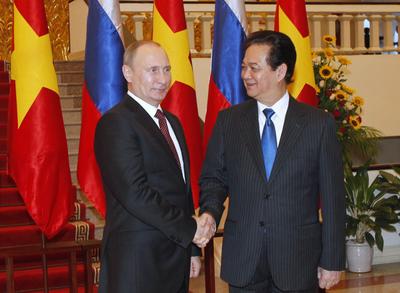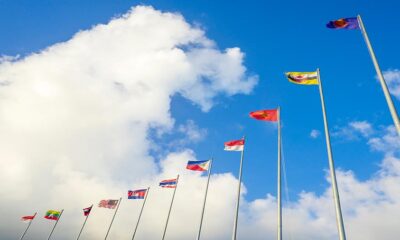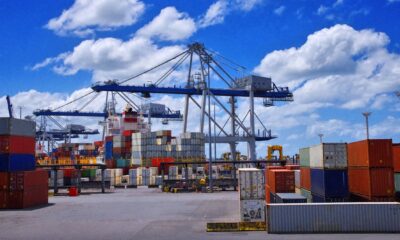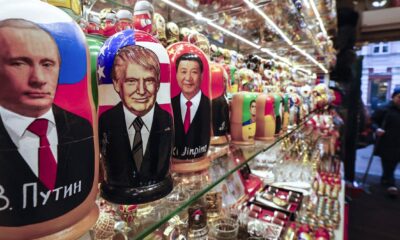Vietnam
So where’s the outrage now, boys?
The Occupy Sydney camp looked harmless enough when I saw it late last week. Sleeping bags and milk crates were arranged in a neat semi-circle at the top of Martin Place outside the Reserve Bank.
The Occupy Sydney camp looked harmless enough when I saw it late last week. Sleeping bags and milk crates were arranged in a neat semi-circle at the top of Martin Place outside the Reserve Bank.
See the rest here:
So where’s the outrage now, boys?
Vietnam is a magnet for foreign direct investment. The success of doing business in Vietnam is greatly facilitated by the ability to put through effective corporate structure and financial management system to deal with foreign investment laws, taxation, accounting and foreign exchange issues in Vietnam.
The investment registration process and tax management in Vietnam is decentralized, with the municipal and provincial authorities having significant discretions on how businesses are established and managed from a tax and accounting angle. Having a good local partner, experienced staff and localized professional support would greatly assist in the initial start-up stage.
On November 7, 2006, Vietnam became the World Trade Organization (WTO)’s 150th member. Vietnam’s access to WTO was intended to provide an important boost to Vietnam’s economy, to ensure the continuation of liberalizing reforms and create options for trade expansion. However, WTO accession also brings serious challenges, requiring Vietnam’s economic sectors to open the door to increased foreign competition.
The 18th International Business Report (IBR) survey by the auditing and consultancy firm Grant Thornton surveyed over 7,400 privately held businesses across 36 nations, finding ten countries where businesses were more optimistic about their economic outlooks, including Vietnam. The survey found that expectations of increased revenues in 2010 for Vietnam is the most optimistic, with 95 percent of respondents forecasting an increase in revenue and 91 percent, an increase in profitability, in 2010. However, according to the survey, due to the global recession, average selling prices in Vietnam are expected to decrease by 13 percent. This means total sales may increase but profitability per unit may fall.
Education and the system of higher learning and technical schools is very important to business as it provides the trained workers and also a system to transfer skills and train new employees needed in a modern business society. In Vietnam, the economy in recent years has had a remarkable performance. GDP growth increased 8.5% in 2006, 8.2% in 2007 and 8.5% in 2009. In 2009, according to the Asia Development Bank (ADB) in their latest late September, 2009 revision the bank predicted that growth would be 4.7% for all 2009. Growth in 2010 is projected at 6.5 percent according to the same source. Future growth is highly dependent on a high quality workforce who are better skilled and trained in modern education and with better quality language skills.
Politics
Vietnam needs to bring the dong down
Author: Chu Nguyen, UHD
The appreciation of the Vietnamese dong, coupled with characteristics specific to Vietnam’s transitional economy, leaves the State Bank of Vietnam (SBV) with difficult choices in conducting monetary policy. Luckily, the SBV retains adequate fiscal flexibility to respond to this pressure through its exchange rate policy.

Vietnam has, for several decades, pegged the dong to the US dollar, within a limited band of 1–2 per cent. This has been as an important measure of macroeconomic stability. The SBV promotes economic growth, controls inflation, stabilises the exchange rate and preserves the stability of the financial system. But it also subsidises inefficient state-owned enterprises (including state-owned commercial banks with a huge collection of non-performing loan portfolios), public development projects mandated by parliament, national budget deficits (including the large trade deficit with China), and other governmental international financial obligations. The SBV also uses interest rate caps and controls on credit frequently as monetary policy tools.
The SBV has resorted to an on-again, off-again monetary policy in order to accomplish these ends. This results in periods of high inflation followed by tight credit and high interest rates, often leading to business failures. Failed businesses are mostly private because they do not have public subsidies or borrowing privileges. High inflation rates lowers real national income, which foments discontent and possible social unrest and creates cyclical instability, personal bankruptcies, and waves of speculation in the real estate and equity markets.
Fluctuations in Vietnamese inflation also alter the difference in the inflation rates of Vietnam and its trading partners. This will have an impact on the exchange rate of the two currencies. If Vietnam’s inflation rate exceeds that of its trading partner then there will be upward pressure on the real exchange rate. There would be a consequent deterioration of Vietnam’s competitive position, with all the subsequent negative effects on the economy. To prevent a rise in the real exchange rate, the dong has to depreciate relative to the foreign currency in order to reflect the inflation differential.
But since the beginning of 2013, the real exchange rates of the dong with the US dollar and the renminbi have both been larger than one. This means that Vietnam’s competitive positions in its bilateral export markets with China and the United States have deteriorated. To improve competitiveness, the SBV could tighten monetary policy to reduce inflation. Alternatively, it could allow its currency to depreciate faster. Both entail short-term pain and long-term gain. The SBV will likely justify this by saying that it is necessary to bring jobs to Vietnam in the age of globalisation.
But that said, there is no need for drastic monetary action at this point in time. In December 2014, the real exchange rates against both the Chinese yuan and the US dollar sat at around 1.002. They are below those observed during 2008–09 (1.008 against China and 1.010 against the US). In other words, the real exchange rate does not need all that much adjustment now in order to improve the competitive position of Vietnam relative to its trading partners.
Vietnam has made progress, but it needs to persevere in bringing the real exchange rate down further to improve competitiveness.
Chu Nguyen is Associate Professor and Chairman of the Finance, Accounting and Enterprise Information Systems Department, University of Houston–Downtown.
Visit link:
Vietnam needs to bring the dong down
Asean
The US and Vietnam go from mutual ‘menace’ to mates
Author: Hung Nguyen, George Mason University
US–Vietnam relations have come a long way. In 1982, in his report to the Fifth Congress of the Communist Party of Vietnam (CPV), Secretary-General Le Duan claimed that US–China collusion constituted ‘a factor constantly threatening world peace, and especially seriously menacing security and stability in Asia’. Today, Vietnam considers the US to be a stabilising factor in the Asia Pacific. Prime Minister Nguyen Tan Dung told the Shangri-La Dialogue on 31 May 2013 that Vietnam welcomed the strategic engagement of the United States as a Pacific power and expected that, together with China, it would assume ‘the biggest role in and responsibilities to the region and the world’.

Two factors have driven this change of heart: the need for dramatic reform to avoid economic and regime collapse in the 1980s, and China’s increasing challenge to Vietnam’s sovereignty and territorial integrity. In this context, the United States is well positioned to meet Vietnam’s needs.
Efforts to overcome mutual distrust eventually led to the normalisation of diplomatic relations between the two former enemies in 1995. China’s aggressive behaviour in the South China Sea and the convergence of US and Vietnamese strategic interests have since led to a rapid improvement in bilateral security relations.
Progress on the diplomatic front is illustrated by increasing visits by Vietnamese leaders to the United States and vice versa. Bill Clinton was the first US president, and William Cohen the first secretary of defense to visit Vietnam in 2000. Phan Van Khai was the first prime minister of a unified Vietnam to visit the US in June 2005, followed by former president Nguyen Minh Triet in 2007. If the CPV Secretary General Nguyen Phu Trong visits the US as planned later in 2015 he would be the first top party and country leader ever to visit the United States.
The removal of the US trade embargo against Vietnam in 1994 opened up an era of economic cooperation, leading to a comprehensive bilateral trade agreement in 2000, normalisation of trade relations in 2006, and Vietnam’s ascension to the WTO in January 2007. As a result, US–Vietnam bilateral trade has grown from US$451 million in 1995 to nearly US$35 billion in 2014. US direct investment in Vietnam rose from US$126 million in 2000 to US$1.1 billion in 2013.
The conclusion of negotiations for Vietnam to join the Trans-Pacific Partnership (TPP) remains unfinished business. For Vietnam, the TPP brings with it certain risks, but they are compensated for by numerous economic, political and strategic benefits, including facilitating the recognition of Vietnam’s status as a market economy. For the US, the TPP provides a firm economic foundation for its ‘rebalancing’ to Asia strategy. But Congressional reluctance to pass ‘trade promotion authority’ legislation remains a key road block.
Military relations have begun to accelerate since 2009 as the security interests of Vietnam and the US have converged. In 2009, China drew a nine-dashed line claiming 80 per cent of the South China Sea, before placing a huge oil rig within Vietnam’s claimed exclusive economic zone in 2014. Recently, China has embarked on large-scale reclamation projects to turn submerged rocks into islands, possibly to serve as military outposts. While the US is impartial to territorial disputes among claimants, it considers China’s claim to be illegitimate and opposes the use of coercion or force to change the status quo.
The US has also pledged to help Vietnam improve its defence capability, by partially lifting the ban on the sale of lethal weapons to Vietnam and by offering US$18 million for Vietnam to strengthen its coastguard patrol. The US and Vietnam have also agreed to a ‘comprehensive partnership’ and to cooperate in multilateral forums.
But US officials have repeatedly insisted that unless there is demonstrable progress on human rights, relations between the two countries cannot reach their full potential. While there has been progress, differences remain over the freedoms of religion, expression, association and the internet. Vietnam’s efforts to reform its criminal code to protect individual freedoms may or may not meet US expectations.
For years, relations between Vietnam and the US have suffered from mutual distrust because Vietnam suspected the US of using ‘human rights’ as a means of destabilising its regime. Prime Minister Nguyen Tan Dung has called for the building of ‘strategic trust’ between the two countries. This stage has now perhaps nearly been reached.
In addition to the commitment to ‘respect each other’s political systems,’ Increased ties in education and training are key to building this trust. Among the 16,000 Vietnamese students in the United States, many are the children of Vietnamese leaders. Graduates from American universities are no longer viewed with suspicion but have been placed in important positions.
Lesser known but no less important are the increasing visits by high-ranking Vietnamese leaders to the United States to set up working relations with their US counterparts, including the annual practice of sending ministers and provincial heads to the Harvard Kennedy School of Government to attend short seminars.
While the convergence of strategic interests may prompt a temporary partnership between the US and Vietnam, it is educational exchange and training that can lead to more shared values and interests. That foundation of mutual understanding, trust and close cooperation will provide the basis for a more solid and lasting relationship, especially when the mantle of leadership passes to a new generation of Vietnamese leaders.
Hung Nguyen is Professor Emeritus of Government and International Affairs at George Mason University and Nonresident Senior Associate of the Center for Strategic and International Studies, Washington, DC.
Read the original here:
The US and Vietnam go from mutual ‘menace’ to mates
China
Vietnam ropes in stakeholders to China territorial dispute

Author: P. K. Ghosh, Observer Research Foundation
Vietnam’s recent granting of seven oil blocks in the South China Sea for exploration by India is part of a plan to internationalise Hanoi’s territorial dispute with China. Hanoi hopes to create more stakeholders who can withstand hegemonistic Chinese ambitions in the area.

It is well known that the Indian government has made heavy investments in energy exploration in the South China Sea. Awarded through the global bidding process, India earlier had three blocks in the Vietnamese region in which about US$360 million was invested through the state-run ONGC Videsh Ltd (OVL).
OVL has been prospecting for oil in Vietnam’s exclusive economic zone in blocks 127 and 128 (Phu Kanh Basin) in territories under dispute. It withdrew from block 127 which proved unviable and dry, while block 128 was bogged down by layers of hard rock and unfavourable geological conditions which made it difficult to penetrate.
Despite these issues, India decided not to withdraw from block 128 for geo-strategic reasons, including a request from the Vietnamese to stay on for another two years. In the meantime Indian operations of extracting natural gas in block 6.1 since 2003 in the region, which is not under dispute, continues from where it got two billion cubic metres of gas in 2011–12 for its 45 per cent participating interest.
While the Chinese had not objected to Vietnam allotting the lucrative block 6.1 to India in Nam Con Son Basin, it objected to India taking up exploration in blocks 127 and 128. Chinese objections have included demarches, pressure on companies not to sell equipment to India and the alleged harassment of an Indian warship, INS Airavat, which had transited through the disputed portion of the South China Sea.
Following talks between Prime Minister Manmohan Singh and General Secretary Nguyen Phu Trong during the Vietnamese leader’s recent high-profile visit to India, eight agreements were signed. There was also an MoU signed, in which the seven oil blocks in the South China Sea were offered to India — including three on an exclusive basis — as well as joint prospecting in some Central Asian countries with which both Hanoi and New Delhi have good political ties.
The blocks have been offered on a nomination basis whereby India’s OVL would not have to go through a bidding round of offering the best production sharing contracts. Instead a direct proposal for production sharing would be negotiated under Vietnam’s petroleum laws.
Aside from India, Hanoi is also targeting Russia and Japan to counter pressure from China as their presence would serve as a deterrent. (Hanoi recently roped in Russia to invest in oil and gas blocks.)
Hanoi’s move could make China uneasy as Chinese foreign policy, especially towards the South China Sea and the East China Sea, has undergone a major shift in the last few years. This change in course has ensured that Deng Xiaoping’s ‘24-character strategy’, which acted as a guideline for foreign and security policy, and China’s phase of ‘biding time’, has evolved into a more forceful assertion of sovereignty claims.
The new Chinese leadership under Xi Jinping — which is keen to establish its authority in the national politics and thus shy away from being called ‘weak or too generous’ — has upped the ante and signalled an uncompromising stand by regarding the South China Sea as a matter of ‘core interests’.
It is not difficult to imagine that the Chinese will be uncomfortable with the current scenario. China is against any ‘outside power’ being involved in the South China Sea, though its own forces are regularly operating in the Indian Ocean region. Vietnam on its part well knows that it makes strategic sense to internationalise the scenario and put into place as many international stakeholders as possible.
The only countries that can probably withstand the pressures from and against China are being wooed by Vietnam. They in turn may like to prop up Vietnam as a bulwark against the increasingly hegemonistic attitude of the Chinese. The United States, Russia and India are the countries that fit well into the Vietnamese game plan.
Dr P. K. Ghosh is a Senior Fellow at the Delhi-based Observer Research Foundation and a former Co-Chair of the CSCAP International Study Group on Maritime Security.
This article was first published here as RSIS Commentary No. 228/2013.
View original post here:
Vietnam ropes in stakeholders to China territorial dispute







